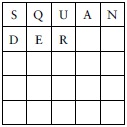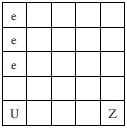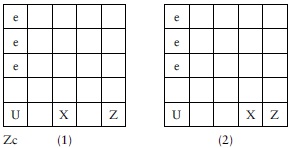Have His Carcase (52 page)
Authors: Dorothy L. Sayers

want to forget.’
‘Can’t be that. For one thing, he’d have had it handy, in an outer pocket –
not tucked away in a case. And besides—’
‘Not necessarily. He’d keep it handy til he got to the place and then he’d
tuck it away safely. After al, he sat at the Flat-Iron alone for an hour or so,
didn’t he?’
‘Yes, but I was going to say something else. If he wanted to keep on
referring to the letter, he’d take – not the cipher, which would be troublesome
to read, but the de-coded copy.’
‘Of course – but – don’t you see, that solves the whole thing! He did take
the copy, and the vilain said: “Have you brought the letter?” And Alexis,
without thinking, handed him the copy, and the vilain took that and destroyed
that, forgetting that the original might be on the body too.’
‘You’re right,’ said Wimsey, ‘you’re dead right. That’s exactly what must
have happened. Wel, that’s that, but it doesn’t get us very much farther. Stil,
we’ve got some idea of what must have been in the letter, and that wil be a
great help with the de-coding. We’ve also got the idea that the vilain may have
been a bit of an amateur, and that is borne out by the letter itself.’
‘How?’
‘Wel, there are two lines here at the top, of six letters apiece. Nobody but
an amateur would present us with six isolated letters, let alone two sets of six.
He’d run the whole show together. There are just about two things these words
might be. One: they might be a key to the cipher – a letter-substitution key, but
they’re not, because I’ve tried them, and anyway, nobody would be quite fool
enough to send keyword and cipher together on the same sheet of paper. They
might, of course, be a key-word or words for the
next
letter, but I don’t think
so. Six letters is very short for the type of code I have in mind, and words of
twelve letters with no repeating letter are very rare in any language.’
‘Wouldn’t any word do, if you left out the repeated letters?’
‘It would; but judging by Alexis’ careful marking of his dictionary, that simple
fact does not seem to have occurred to these amateurs. Wel, then, if these
words are not keys to a cipher, I suggest that they represent an address, or,
more probably, an address and date. They’re in the right place for it. I don’t
mean a whole address, of course – just the name of a town – say Berlin or
London – and the date below it.’
‘That’s possible.’
‘We can but try. Now we don’t know much about the town, except that the
letters are said to have come from Czechoslovakia. But we might get the date.’
‘How would that be written?’
‘Let’s see. The letters may just represent the figures of the day, month and
year. That means that one of them is an arbitrary fil-up letter, because you
can’t have an odd number of letters, and a double figure for the number of the
months is quite impossible, since the letter arrived here on June 17th. I don’t
quite know how long the post takes from places in Central Europe, but surely
not more than three or four days at the very outside. That means it must have
been posted after the 10th of June. If the letters do not stand for numbers, then
I suggest that RBEXMG stands either for somethingteen June or June
somethingteen. Now, to represent figures our code-merchant may have taken 1
= A, 2 = B, 3 = C, and so on, or he may have taken 1 as the first letter of the
code-word and so on. The first would be more sensible, because it wouldn’t
give the code away.* So we’l suppose that 1 = A, so that he originaly wrote
A? JUNE or JUNE A? and then coded the letters in the ordinary way, the ?
standing for the unknown figure, which must be less than 5. Very good. Now, is
he more likely to have written June somethingteen or somethingteen June?’
* The hypothesis that RBEXMG represented a date written entirely in numerals proved to
be untenable, and for bravity’s sake, the calculations relating to this supposition are
omitted.
If you’re coding the pair of letters DE, then, by taking the letters to the right of
them (by the horizontal rule) you get DE = ER; the letter E appears both in
code and clear. And the same for letters that
immediately
folow one another
in a vertical line. Now, in our first pair EX = JU, this doesn’t happen, so we
may provisionaly write them down in diagonal form
‘Most English people
write
the day first and the month second. Business
people at any rate, though old-fashioned ladies stil stick to putting the month


first.’
‘Al right. We’l try somethingteen June first and say that RBEXMG stands
for A? June. Very good. Now we’l see what we can make of that. Let’s write
it out in pairs. We’l leave out RB for the moment and start with
EX
. Now EX
= JU. Now there’s one point about this code that is rather helpful in decoding.
Supposing two letters come next door to one another in the code-diagram,
either horizontaly or verticaly, you’l find that the code pair and the clear pair
have a letter in common. You don’t get that? Wel, look! Take our old key-
word SQUANDER, written in the diagram like this:
Taking these letters as forming the corners of a paralelogram, we can tel
ourselves that JX must come on the same line in the diagram either verticaly or
horizontaly; the same with JE, the same with EU, and the same with UX.’
‘But suppose JN folows the horizontal rule or the vertical rule without the
two letters actualy coming together?’
‘It doesn’t matter; it would only mean then that
all four of them
come on
the same line, like this: ? J E U X, or X U E? J or some arrangement of that
kind, So, taking al the letters we have got and writing them in diagonals we get
this:


Unfortunately there are no side-by-side letters at al. It would be very helpful if
there were, but we can’t have everything.
‘Now the first striking thing is this: that U and X have to come on the same
line. That very strongly suggests that they both come in the bottom line. There
are five letters that folow U in the alphabet, and only four spaces in which to
put them. One of them, therefore, must be in the key-word. We’l take a risk
with it and assume that it isn’t Z. If it is, we’l have to start al over again, but
one must make a start somewhere. We’l risk Z. That gives us three possibilities
for our last line: UVXYZ with W in the key-word, or UWXYZ with V in the
key-word, or UVWXZ with Y in the key-word. But in any case, U must be in
the bottom left-hand corner. Now, looking again at our diagonals, we find that
E and U must come in the same line. We can’t suppose that E comes
immediately above U, because it would be a frightful great key-word that only
left us with four spaces between E and U, so we must put E in one of the top
three spaces of the left-hand column, like this:
‘That’s not much, but it’s a beginning. Now let’s tackle X. There’s one
square in which we know it
can’t
be. It can’t come next to U, or there would

be two spaces between X and Z with only one letter to fil them; so X must
come in either the third or the fourth square of the bottom line. So now we have
two possible diagrams.
‘Looking at our diagonal pairs again, we find that J and X come in the same
line and so do J and E. That means that J can’t come immediately above X, so
we wil again enter it on both our diagrams in the top three squares in the X line.
Now we come to an interesting point. M and N have got to come in the same
line. In Diagram 1 it looks fearfuly tempting to put them into the two empty
spaces on the right of J, leaving K and L for the key-word; but you can’t do
that in Diagram 2, because there’s not room in the line. If Diagram 1 is the right
one, then M or N or both of them must come in the key-word. M and E come
in the same line, but N can’t come next-door to E. That warns us against a few
arrangements, but stil leaves a devil of a lot of scope. Our key-word can’t
begin with EN, that’s a certainty. But now, wait! If E is rightly placed in the
third square down, then N can’t come at the right-hand extremity of the same
line, for that would bring it next to E by the horizontal rule; so in Diagram 1 that
washes out the possibility of JMN or JLN for that line. It would give us JLM,
which is impossible unless N is in the key-word, because N can’t come next to
E and yet must be in the same line with it and also with M.’